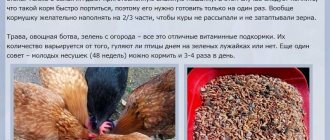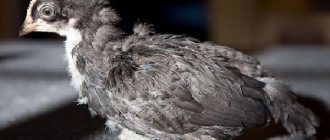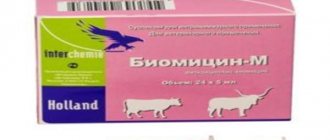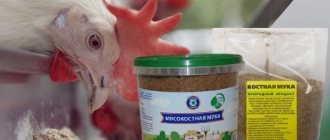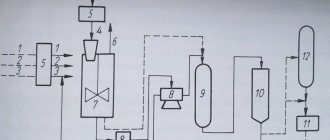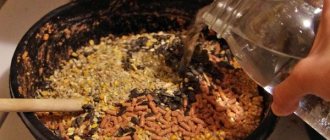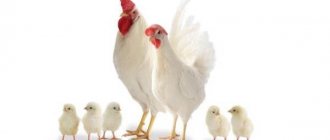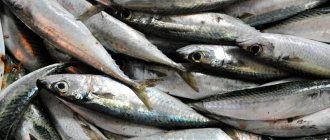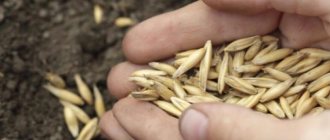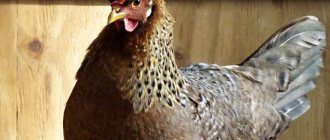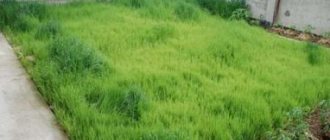Sprouting: basics of soaking technology
Soaking is one of the most popular ways to germinate wheat. For everything to go smoothly, the room where the work will be carried out must be at least +20°C. Also prepare a container washed with potassium permanganate and proceed:
- Prepare grain at the rate of 15-20 g per chicken.
- Pour the food into the container. Fill it with cool water about +15...20°C. The water should be 2 cm above the grain level.
- Poultry farmers advise starting procedures in the evening. After 12 hours, the grain will have absorbed enough liquid. Transfer some of it into a bag and place it in a dry container to drain the water.
- When the liquid has drained, put the bag in a cool place for about a day. By the next morning, the sprouted poultry feed will be ready.
- The remaining part of the soaked grain should be placed in another bag, allowed to drain and placed in a warm place. This food will germinate faster - you can feed the chickens by the evening.
- The most useful sprouted grain has sprouts no more than 3 mm - it contains the most valuable substances.
Advice. After the water has drained, the bag should be laid on its side. Distribute the grain inside it in a layer of no more than 5 cm. Otherwise, the food will spoil. You can pour the grain in the same layer from the bag into a wooden box.
Don't be alarmed if the grain has not sprouted by the next morning. According to technology, the process can last up to 3 days. During this period, the feed should be mixed periodically. You can also soak it longer. For example, for 24 hours. However, the period should not be more than 3 days - this is dangerous with the risk of developing intestinal infections.
You can germinate wheat for longer - up to a sprout of 6 cm. Such greens are very rich in vitamin A. Just place the container with water in the sun. Make sure that the sprouts do not grow longer. They can be cut and given to the bird separately, and the grain can be soaked again to obtain a new portion of greens.
Necessary nutrients
The diet of chickens must contain a sufficient amount of components important for health in strictly defined proportions:
- Proteins are the basis for building the cells of the avian body and for the formation of eggs. Chicken feed must contain vegetable proteins - processed products of sunflower, soybeans and legumes (meal, cake). The required amount of animal proteins can be provided by bone meal, earthworms, shellfish, waste from hatchery, meat and fish production.
- Fats are the most important component of the diet, providing a supply of vital energy for chickens. In laying hens, half of the fat is stored under the skin, and the other is used during egg formation. The main sources of fat are corn, sunflower oil, oats.
- Carbohydrates are substances useful for the normal functioning of muscles and almost all internal organs.
Chicken mixtures should include sucrose, fiber, and starch. Most of these foods come from root vegetables, and the fiber comes from grains. The grain contains essential amino acids, starch, sucrose and pentosans - A complex of vitamins, the main ones of which are A, B, D. The main vitamin-containing additives are fresh grass, baker's yeast, fish oil, chopped pine needles, silage. With a deficiency of vitamins, chickens often get sick, lose weight and egg production.
- Minerals – strengthen the skeleton and promote the formation of the shell. Contained in lime, ash, gravel, pulp and bone meal, crushed shells. It is advisable that such additives are always available in sufficient quantities in separate feeders.
This is what bone meal looks like Bone meal
What else can you give chickens?
Grain crops alone cannot provide all the needs of a chicken’s body, so other products must be present in its diet. Below we will consider the advisability of introducing some of them.
Barley
Barley is also an essential ingredient in chicken feed, as well as for all livestock and poultry. However, it should be said that chickens do not like it because of the sharp ends of the shell. To make sure they eat it, it should be given mixed with other grains.
Barley, like oats, is rich in protein (10 g), carbohydrates (56 g), fats (2 g), fiber (14.5 g), vitamins, minerals, amino and fatty acids.
Wheat germination technique
The good news for those new to poultry farming is that sprouting wheat does not require any special skills or tools. Anyone can turn ordinary grain into something incredibly healthy. Carefully read the step-by-step germination instructions below and repeat point by point in the same order.
Step #1: choosing wheat
Sprouted wheat must be of high quality, since the properties of the sprouts emerging from the grains directly depend on this. You can buy it in a store, market or country farm. When purchasing, check the grain for quality. The cereal must be free of impurities and have a golden light or dark brown color.
Carefully inspect the grain before purchasing to assess its quality
Don't skimp on your chickens. A large increase in egg production will pay for all the money spent on laying hens, and you will also be calm about the health of your charges.
Step No. 2: soak the grain
Soaking the grain is done in any deep container so that the poured water does not overflow. Suitable for this purpose:
- bucket;
- pelvis;
- a plastic water bottle with a hole cut out;
- plastic bath, etc.
Soaking grain is done in any deep container
Water is poured into the selected container. If you stored the grain in a warm room, pour in water at a temperature of 40-45°C. In cases where the millet has been in the cold temporarily or for a long time, fill the entire mass with hot water. This is necessary to awaken the grains using heat shock.
Step No. 3: soak the resulting mixture
The resulting mass after mixing grain and water must be placed in a dark and always warm place. Cover the container with a lid and leave for 15 hours. There is no need to do anything else at this stage of germination.
The resulting mixture is kept in the dark
Step No. 4: laying out the grains
After the period specified in the previous step has expired, remove the wheat from the container. If there is any excess water at the bottom of the tub, carefully drain it. Take a new, clean tub or spread oilcloth on a surface protected from cold and drafts.
You can use regular gauze as a wrapping fabric.
Spread the grains over the surface so that their layer is not too thick, otherwise the wheat will begin to rot and the work done will go down the drain. Find a scrap piece of natural fiber fabric, soak it in warm, preferably non-chlorinated water, and place it on top of the spread grain.
Step #5: Feeding Wheat to Chickens
After two days of being under a damp cloth, the wheat will produce juicy sprouts. Some poultry keepers recommend waiting an extra day to achieve long, strong shoots, but it is not necessary to spend extra time. Here is a nutritious product completely ready for chickens to eat.
However, it should be noted that by waiting for the sprouts to be 5-6 millimeters long, the farmer will seriously increase the vitamin A content in the chickens’ diet.
You can feed chickens with sprouted grains immediately, or you can wait until the sprouts increase
Do not soak large quantities of wheat at once. Firstly, “the first pancake is lumpy,” as they say in our homeland. Secondly, sprouted grains are not stored for long. So that the precious sprouts do not disappear along with them, prepare grains for two or three feedings of the wards.
Steaming grain
Many poultry farmers use steamed grain to feed chickens. The feed may contain several grain crops. Wheat is most often processed in this way.
Expert opinion
Novoselova Sofya Ivanovna
Farmer. 20 years of experience.
Ask a Question
The need to process grain is due to the fact that when dry it takes a long time to digest. The grain is prepared immediately before feeding, since ready-made wet food cannot be stored.
How to steam
To properly prepare food, you need to perform the following procedure:
- grind the grain using a combine or mill and place in an enamel container;
- pour hot water over the prepared grain, mix thoroughly and boil;
- cover with a lid and leave for 15-20 minutes to swell;
- Cool the mixture and use it for feeding.
The finished grain should be loose, crumbly, and not stick together into a lump.
How to give
The steamed food is fed in the morning, filling the feeder to one third of the volume. Chickens should eat the feed within 40-50 minutes. If they eat the food earlier, the norm is increased. The feeder should remain empty, as the grain quickly sours and can cause digestive problems.
Are potatoes good or bad for adult broilers and chickens?
Read
How and in what quantity can you give chickens sugar and fodder beets?
More details
Zucchini in the diet of broilers: how much and in what form can the vegetable be given to adult birds and chickens
Look
Oats for ducks
Like many waterfowl, ducks should be given oatmeal in combination with green succulent plants and roots. To fatten a bird to produce good, nutritious meat, it is necessary to provide it with a balanced menu.
The value of oat grain for duck is characterized by:
- the presence of protein, which forms the basis of the structure of muscle mass;
- carbohydrate content that gives the bird energy;
- dietary fiber, which affects digestion processes;
- vitamin and mineral composition that has a beneficial effect on the health of the bird.
If cereals and especially oats predominate in the feed, then the young animals grow faster and gain weight. The faster a bird gains slaughter weight, the more tender its meat becomes.
Along with corn and wheat, coarse oatmeal is also added to the wet mash.
Also, to avoid unexpected phenomena in digestion, it is recommended to peel or steam oat grains. This is especially true when feeding ducklings.
How to properly feed oats to chickens
Thus, the benefit or harm of introducing this cereal into the diet of chickens will depend on two factors:
- in what quantities it will enter the bird’s body;
- how will you give it?
The fact is that unprocessed grain with husk contains more fiber than unhulled grain. Therefore, it is advisable to give it without shells - this way the amount of fiber that enters the bird’s body will be almost 5% less.
It is also advisable to chop, germinate or steam the cereal before putting it into the feeder.
During the summer
In the summer, when the chicken can walk a lot and get its own food, the amount of oats should not exceed 20% of the total feed. It is given separately or mixed with other grains and other types of food, for example, with herbs and vegetables.
In winter
In winter, birds should be given sprouted or steamed oats - in this form they are better absorbed by the bird’s digestive tract. The recommended total number of cereals per day per individual is 120 g, of which oats - 30 g.
It is very important to give this product during periods of molting or decreased egg production.
How to germinate grain for chickens
- Place a clean cloth made from natural threads in a plastic container.
- The fabric is moistened.
- They put grains on it.
- Cover with a layer of damp cloth.
- Place the container in a warm place with good lighting.
- Before sprouts appear, the grains are moistened as necessary.
- After the roots and green sprouts appear, they are given to the chickens.
An easier way to germinate grain for chickens at home can be found in the video -
How to steam grain
- Bring water to a boil.
- Add a little salt to it (no more than 5 g).
- Pour boiling water over oats.
- Boil it for 10 minutes.
- The water is drained.
- The grain is dried.
How to soak and germinate?
Sprouting grain is a simple process. To germinate a cereal, you should follow a certain sequence of actions:
- Take a plastic container and place clean natural material in it.
- Moisten the cloth and place the grains on it.
- Cover with a damp cloth.
- Place the container in a warm and well-lit place.
- The grains should be moistened as needed. This is done until sprouts form.
- When roots and green shoots appear, food can be given to chickens.
There is also a method of steaming grains. To do this, you should perform the following steps:
- bring water to a boil;
- put a maximum of 5 grams of salt in it;
- pour boiling water over the cereal;
- boil for 10 minutes;
- drain the water;
- dry the grains.
Steaming grain
Some breeders use the technique of steaming grain. For this purpose, different crops are taken, but mainly wheat grain is used for steaming. This is due to the fact that in dry form it is quite difficult and takes a long time to digest by birds.
The wheat must first be ground. You can use household mills for this. It is better to steam the grain in glass or ceramic containers. The dry mixture is filled with water, the temperature of which can be from 30 to 45°C. The dish is covered with a lid. When all the liquid is absorbed, the food can be considered ready. It should crumble in your hands.
If the chicken does not lay eggs, experienced breeders recommend steaming it with crushed grain. This food helps to increase the egg production of laying hens.
An important condition is that you cannot steam a large amount of grain at once. It spoils quickly
Possible problems from feeding oats
The digestive organs of chickens have difficulty digesting fiber, which is present in large quantities in oatmeal. Therefore, birds should not be given a lot of grain.
Also, oats should not be given to birds that tend to gain weight. This product promotes the development of adipose tissue. As a result, chickens do not lay eggs well and become more susceptible to infections.
Oats are a popular food that contains many vitamins and minerals.
It is often used when preparing diets for chickens. To achieve good results and not harm the birds, you should strictly follow the standards of this product.
https://ogorodgid.ru/vopros-otvet-kury/mozhno-li-davat-kuram-oveshttps://agronomu.com/bok/7287-edyat-li-kury-nesushki-oves-i-kak-pravilno- ego-davat.htmlhttps://dachamechty.ru/kury/pitanie/oves.html
How to prepare feed with oats
To make a combination food with the addition of oatmeal, it is worth taking into account the age of the birds.
For chickens
Chicks that have recently hatched should be given crushed oats. It can be included in mash or dry mixtures. To prepare 1 kilogram of feed you will need the following components:
- 500 grams of chopped corn;
- 150 grams of wheat or barley flour;
- 150 grams of sunflower meal;
- 80 grams of crushed barley;
- 2/3 cup kefir 1% or whey;
- 3 grams of salt.
See also
Recommendations on the best way to feed day-old chicks at homeRead
The fermented milk product is preheated to 30-35 degrees. This will help to fully saturate all the ingredients of the composition.
To avoid vitamin deficiency and the development of diseases, it is permissible to add premixes for chicks to the feed. Such substances contain many vitamins and microelements. In the morning the composition is added to the main diet. It is important to adhere to the dosage.
For laying hens
Mature laying hens should make food based on wheat, yellow and red millet. These components are mixed in a ratio of 2:1:1. This composition should account for half of the mixture. To it you need to add 25% corn, 15% oats, 8% millet and 2% shell rock.
To supply birds with vitamins, a premix for laying hens is used. Thanks to this, they will systematically produce eggs. Such remedies help avoid the development of eye and joint diseases. There should be 10 grams of the substance per 1 kilogram of feed mixture.
For broilers
The diet of these birds should be aimed at rapid weight gain. To do this, the feed must contain 10% oats, 5% fish or meat and bone meal, 20% corn. The rest comes from wheat and bran. These components are taken in equal proportions.
Broilers need special premixes. They are manufactured taking into account the metabolic processes of meat chicken breeds and help to enhance weight gain at low feeding costs. This substance allows you to avoid the development of anemia and rickets, diseases of the thyroid gland and eyes. For 1 individual take 1 gram of the substance.
Nutritional value of oats for chickens
In order to add new types of products to the menu of feathered “friends”, it is necessary to understand their composition and nutritional value. Such knowledge will help organize the chickens’ nutrition in such a way that the food fully meets their needs.
Let's look at what the addition of this product to the menu gives to the black lush and what its nutritional value is.
We will consider the content of nutrients in 100 grams of product - using a calculator you can make calculations to calculate the required amount of this plant for a balanced diet of your herd.
- On average, the energy value in its raw form is 380 kcal.
- Most of it is carbohydrates, which are necessary for energy. There are about 65 grams.
- 12-15 grams are made up of different types of fats - saturated, polyunsaturated and monounsaturated.
- The rest is protein and water. Protein is essential for muscle gain and development.
- In addition, the product contains large quantities of important components such as calcium, potassium, sodium, magnesium and iron. They are responsible for healthy egg production and good health.
Secrets of adding grain to the menu
The first and basic rule for adding a product to the menu of feathered workers is the correct dosage.
If you are using industrial feed that already contains 10-20% oats, then there is no point in feeding this grain separately if it is summer and your chickens do not molt.
Here are some recommendations for adding this product to the menu of feathered workers.
- Give it to chicks during the seasonal molting period. No other grain can stimulate feather growth like this, so such food can speed up the restoration of “fur coats”. In addition, during the molting period, it is recommended to shorten the daylight hours in the poultry house so that its residents can quickly go through this difficult stage of their lives.
- During the growth period, young chicks are also recommended to consume this type of grain, in addition to the norm that they receive from combined feed. The younger generation can serve it in the form of flakes or ground. This supplement is useful 2-3 times a week.
- And of course, sprouted grains will help your herd survive the winter. The deficiency of green food is partially compensated with the help of grass and pine flour, and partly with the help of sprouted grain. It is very simple to prepare such a healthy delicacy. Many people practice germination in baking sheets or plastic containers. The grain is kept warm on a damp cloth (but not in the heat - it may spoil).
Read also: Why chickens lay small eggs and what needs to be done to increase their size
How to select and prepare wheat for germination?
Sprouting wheat for chickens and chicks is not difficult, but for this you need to follow some rules. The fact is that during the process, the grain may begin to rot, become moldy, acquire an unpleasant odor, or not hatch at all.
Feed wheat is used for chickens
For chickens, feed wheat is used. It is not suitable for human consumption due to its low quality, but for birds it is what is needed. However, this is not a rule that should be followed relentlessly; if the breeder has the means, you can buy the highest grade wheat, it’s just that feed is always cheaper, and that’s why it’s popular.
Before germination, the grain is filled with water and washed several times to get rid of dirt.
It is also important to remove all floating (empty) husks, as they will be of no use.
Oats for chickens: arguments for and against, volumes
When compiling a daily diet for chickens, it is necessary to remember that it usually consists of dry feed (mixed feed with grain mixture and various additives in the form of vitamins, minerals and nutrients), the so-called home-made mash or combined nutrition, which includes both feed and and mash.
In any case, the more components the laying hens receive every day, the better this will affect their health and productivity, and oats for chickens play an important role in this matter. And answering the question about whether chickens are given oats, the vast majority of experts answer in the affirmative, not forgetting to point out certain restrictions. The fact is that oats contain a large amount of fiber, which, although it has a lot of useful qualities, tends to be poorly digested and that is why its maximum volume should not exceed fifteen percent of the total weight of the grain mixture. In addition, oats are not given to birds suffering from obesity, as it promotes the growth of fat mass, as a result of which chickens begin to lay eggs worse and suffer from all sorts of pathologies of the musculoskeletal system. And this component is especially contraindicated for broilers, which quickly fall on their feet due to excess body weight.
Another nuance that should definitely be taken into account when thinking about how to feed oats to chickens is that this ingredient must be thoroughly crushed before use. This requirement is due to the fact that oats that are too coarse can get stuck in the bird’s crop, with all the ensuing consequences. However, a complete refusal to include this cereal crop in the poultry diet is impractical for a number of reasons. Thus, few people know that oats not only improves the reproductive function of laying hens, but also prevents eggshells from pecking. Among other things, it is oats that provide high-quality support to the depleted body of the bird during the period of seasonal molting, when it is especially in need of enhanced and higher-calorie nutrition. For this reason, many farmers try to feed oats to chickens in the off-season, completely excluding it from the regular diet of poultry in the summer, when there is no need to consume this product.
Why doesn't the chicken lay eggs?
When I eventually selected the optimal diet for my chickens, the use of which gave good results, I heard this phrase:
- fell into a slight stupor. Although oats are the standard for a feed unit, they make up no more than 10% of the chicken diet. In some cases, for example, to obtain a high-quality hatching egg, its quantity is increased to 20%, but most of it is given in germinated form. The reason for this approach is simple: many people believe that if chickens do not lay eggs, it means they are overweight, and feeding only oats will correct this situation. Chickens do not lay eggs or lay poorly for several reasons, but not from obesity.
The first reason why a bird does not lay eggs is molting. This is a natural process that lasts for 2-4 months in chickens. During this period, they gradually change their plumage and the energy that they spent on the formation of the egg is spent on growing new feathers. If you notice that your chickens have begun to go bald and have stopped laying eggs, you should not limit their feeding, much less switch them to oats. For quick molting, reduce the bird's daylight hours to 6 hours, and also introduce food rich in animal protein (meat and bone meal, fish meal, fish or meat processing waste) into the diet.
The second reason for low egg production, the most common, is the lack of micro and macroelements, digestible protein in the poultry diet, as well as the lack of metabolic energy obtained from concentrated feed. The fact is that a chicken spends up to 90% of the energy received from feed on its life support and only 10% goes to the formation of muscle mass and eggs. They didn’t give the chicken 10-20 grams. feed and its productivity drops sharply.
And third and last, if after slaughter the bird carcass in the rump area contains a sufficient amount of internal fat, this is a good sign. This means that she was at least healthy and absorbed food well, storing the excess in reserve. The opposite situation suggests that the chicken was simply malnourished or sick, but it definitely did not stop laying eggs because of obesity.
Consumption rate
The beneficial characteristics and side effects of oats depend on the method of preparation and the volume of cereal that the bird receives. Unprocessed, hulled grains contain more fiber than refined grains. Therefore, it is worth using grain without shells. This will help reduce the amount of fiber and make the oats easier to digest.
Before feeding grains to chickens, it is recommended to separate or germinate them. It is also permissible to steam the grains.
In summer
In the warm season, the chicken is free-range and obtains its own food. During this period, the volume of oats should not be more than 20%. It should be used alone or combined with other grains. A combination of the product with vegetables or herbs is acceptable.
in winter
During the cold season, birds need oatmeal. It is given in sprouted form. Cereals are also allowed to be steamed. Thanks to this, it is possible to facilitate absorption by the digestive organs.
A chicken should receive 120 grams of cereals per day. Of this amount, 30 grams should be oats. This product is especially important during molting or drop in egg production.
Sprouting oats for pets
My cat is a Cornish Rex. This cat breed has a very original wavy coat.
Once upon a time we had a Cornish Rex cat. A terrible robber. One day I was preparing a salad, went to the bath for a second, came and observed the following picture: this bastard jumped onto the table and chewed parsley leaves with gusto (!).
At first I thought that he lacked vitamins, but then a knowledgeable neighbor suggested that in this way animals clean their stomachs (after all, cats wash themselves with their tongues, as a result of which lumps of hair get into the stomach and clog it).
Since then, I began to sprout oats at home and treat my cat to the green juicy leaves. At first I sowed the grains in the soil, but then I began to grow it completely without soil, using the hydroponic method.
I suggest watching the video to see how this is done.
And finally, I present to your attention a super energizing breakfast option with sprouted oats.
Sprouted oats for breakfast
Ingredients:
¾ cup oat sprouts
3 teaspoons almond milk or filtered water
1 teaspoon honey (agave extract, maple syrup or, in extreme cases, brown sugar)
½ teaspoon vanilla extract (optional)
2 teaspoons pumpkin seeds
¼ cup almonds (pre-soak overnight)
¼ cup raisins (preferably soaked overnight)
As a garnish: pieces of apple, banana, berries, mango and so on.
Cooking method:
- Rinse the oat sprouts and soaked nuts.
- In a food processor, combine oats, water (almond milk), sweetener and pumpkin seeds.
- Add 1/3 of the nuts and raisins to the mixture and mix on low until the ingredients are sufficiently moistened.
- Add a little more milk or water to achieve desired consistency.
- Decorate the dish with the remaining nuts and raisins, sprinkle coconut, sunflower seeds, hemp seeds, cinnamon on top (choose the topping to your taste).
- Serve alongside your favorite chopped fruit.
Is it possible to give chickens oats?
Oats are not only possible, but also necessary: this crop is the basis of nutrition for domestic laying hens, along with wheat. It has a rich vitamin and mineral composition, which chickens need for normal development, growth and productivity.
The nutritional value of 100 g of oats is 389 kcal.
100 g of this cereal contains:
- vitamins - group B (1, 2, 5, 6, 9), PP;
- macroelements - potassium, calcium, magnesium, sodium, phosphorus;
- microelements - iron, manganese, copper, zinc;
- amino acids - arginine, valine, histidine, leucine, lysine, tryptophan, alanine, glycine and others;
- fatty acids - Omega-3, Omega-6, palmitic, palmitoleic, oleic, lauric, linoleic and others.
The above elements are responsible for high egg laying and good health of birds.
Beneficial features
The rich chemical composition of oats gives it a number of useful properties:
- formation and strengthening of the immune system;
- positive role in the formation of the musculoskeletal system;
- assistance in rapid recovery after molting, stimulating feather growth;
- increased productivity;
- replenishing the body with essential vitamins and minerals;
- beneficial effect on the growth of young animals.
Contraindications
As we have already mentioned, only oats, introduced into the diet in moderation, are beneficial for the bird’s body. Excessive consumption of it, compiling a menu from only this one grain, or improper serving of it harms chickens.
First of all, the harm is caused by a large amount of fiber, which is difficult for the chickens’ digestive system to digest.
And owners of breeds prone to obesity should introduce oats to chickens carefully and in very small doses. In laying hens that have gained excessive weight, egg production deteriorates significantly, bone problems develop, and they become painful due to little physical activity.
Plant-based feed for chickens
Feeds of plant origin include grain feeds, industrial processing waste (flour milling, oil milling, beet sugar), green, succulent feeds, and hay.
Grain feed forms the basis of the bird's diet. From grain feeds, birds are fed: oats, barley, corn, rye, millet, buckwheat, peas, vetch, sunflower seeds, flaxseed and, in addition, waste obtained from grain processing (bran, sweep, chaff, flour dust) and oil mill industry (cake, meal).
Oats for laying hens
Oats are the main grain feed in some areas. It is fed to both adult breeding birds, especially during oviposition, and to young animals. The disadvantage of this feed is the large number of films, reaching up to 30-40% of the weight of the total grain. Chickens should be given oats in ground and sifted form. It stimulates feather growth. Good oats should be large, white or light yellow in color, dry, with a moisture content of no more than 30%. Oats are also fed in sprouted form.
Barley for laying hens
Barley can be included in the diet along with other grain feeds. Birds eat it less readily than corn or wheat. It is better to get used to it from a young age. In areas where barley is a common crop, it can serve as a major component of the grain diet. Good barley should be full-grain and thin-skinned, light yellowish-white in color, with some shine, a fresh strawy smell, without mustiness. It is fed as part of a flour mixture and in its entirety.
Corn for chickens
Corn is a valuable grain feed, most readily eaten by poultry, especially chickens. Due to its high content of carbohydrates and fat, it is considered a good feed for fattening; it is easily digested. In areas where corn is primarily grown, it is a component of almost every diet and is fed either whole or coarsely crushed or ground.
However, the protein in corn is considered deficient in certain amino acids. In addition, it is poor in minerals, especially calcium, so it is better to feed a mixture of grain feeds. When feeding corn to an adult bird during egg-laying in the warm season, it should not be introduced into the diet in large quantities, as this contributes to obesity; in the cold season, the risk of obesity decreases.
Rye for chickens
Rye is similar in composition to wheat, but is relatively poorly eaten by birds, especially in its whole form. When feeding poultry with wet mash, rye is added in ground or steamed form. Rye flour is included in fattening rations and during the first fattening period.
Millet for laying hens
Millet is close in composition to oats. It is fed whole and ground, as well as hulled (millet). Millet is given to chickens in the form of hard-cooked crumbly porridge. Ground millet can be included in grain mash.
Are oats good for chickens?
Oats, along with barley and wheat, are included in most feeds, which are given to both laying hens and meat broilers. The presence of micro- and macroelements has the most positive effect on the growth and development of birds.
Oats are assessed based on their energy value, which depends on the condition of the grain. It can be hulled or unhulled. Depending on this, the figure will be 257 kilocalories or 295, respectively.
The second indicator is the presence of films. If the grain is of the highest grade, then it will contain no more than 30% of films; for grain of lower quality, the value reaches 40%. If we talk about the nutritional value of the film, it is comparable to straw: in addition to proteins and fats in small quantities, it contains poorly digestible fiber. It is most preferable to purchase naked oats for chickens.
Poultry farmers do not recommend giving chickens only this type of grain: it alone will not be enough for a balanced diet, but a certain percentage should still be present. Thanks to oats, the feather cover is quickly restored after molting, skeletal bones are correctly formed in young animals and muscles develop better.
In winter, it is recommended to germinate grain so that chickens can receive vitamins and microelements from the sprouts to maintain the immune system and survive frosts safely.
If you feed only oats, the owner of laying hens may encounter various digestive diseases that occur in chickens. This is due to the fact that oats contain large amounts of fiber, but it is not digested well enough.
Is it possible to give oats to chickens: beneficial properties and qualities
Author: · Published · Updated
Is it possible to give oats to chickens? Many farmers ask this question. Of course, poultry needs adequate feeding and it should include a grain component. Oats, like barley, wheat and millet, are included in the basic composition of the diet for eggs and meat. This type of feed includes the necessary micro and macroelements so that the chicken can fully grow and develop. Cereals have the following average values: carbohydrates 71%, fat on average 5%, protein from 10%, fiber on average 7%.
Oats for the parrot
Due to the high fiber content, unhulled oat grains are not recommended to be given to parrots in their pure form. To avoid the negative effects of this substance, pour boiling water over the grain and simmer over low heat for up to 12 minutes. The water is salted before doing this. The grain is then dried and given to the bird. In the diet, cereal enzyme should not exceed 30%. The most valuable in terms of mineral and vitamin indicators is sprouted grain. Knowing how to germinate oats for a parrot, you can significantly increase the nutritional value of its diet at a lower cost.
Since it is recommended to add different types of seeds and grains to the menu of this bird, in specialized stores you can purchase ready-made mixtures for germination, which include the necessary types of grain.
We offer the correct instructions for germinating such a mixture:
- Wash the grain mixture to remove dirt and debris. Do this several times until the water becomes clear.
- Using a transparent container, add the mixture and add water again. Poor quality grains will float, good ones will sink to the bottom.
- Drain the water and debris and add non-carbonated mineral water or spring water.
- Leave in water for 8-10 hours.
- Wash swollen and hatched grains. Pour again and leave for 6 hours.
- Repeat this procedure 2 times within 2 days. This will help protect the grains from souring and fungal infection.
- On the third day, drain the water, rinse the grains and leave in an open container.
- The food sprouted for three days, and seedlings appeared on it. It is necessary to ensure that their length does not exceed 2 mm.
- In ready-to-eat food, sprouts are visible in all grains. Unsprouted grains are a defect that should be removed.
Sprouted oat grain is an excellent remedy for the prevention of vitamin deficiency. Despite the fact that oats contain a lot of vegetable fat, sprouts will not contribute to its excess in the body of a wavy pet.
Sprouted wheat and barley
Sprouted grains are used as a feed additive in winter, since there is enough greenery in summer.
Sprouts have the following beneficial properties:
- strengthening the body's defenses;
- activation of the gastrointestinal tract;
- means of preventing obesity;
- increased productivity;
- strengthening the skeletal and muscular systems;
- normalization of metabolism.
How to germinate correctly
Sprouting cereals to feed laying hens is not difficult even for novice poultry farmers. This does not require special devices. To get sprouts, you need to follow the following procedure:
- Sort the grains intended for germination. They must be fresh, without signs of rot or mold, and have no odor.
- Place the cereals in an enamel or glass container. It is not recommended to use metal utensils.
- Fill with water whose temperature is about 40 °C. The water level should be 1-2 cm higher than the grains.
- Cover the containers with lids and place in a dark room for 15-17 hours. After this, drain off the excess water.
- Spread the grains in a thin layer on a flat surface for germination. To prevent the cereals from drying out, they are covered with a damp cloth or gauze.
- After 2-3 days, the first seedlings appear. To make the sprouts stronger, they are kept under a damp cloth for another two days.
Seedlings have a limited shelf life, so large quantities should not be germinated.
How to give
There are no strict recommendations for feeding laying hens with sprouted grain. For the supplement to be beneficial, you should follow the recommendations of experienced poultry farmers:
- the optimal time to introduce green sprouts into the diet is autumn and winter, when birds need an additional source of vitamins;
- feed sprouted grains 2 times every 7-10 days in the evening, pouring them on the litter;
- Do not overuse green food, as this can cause an oversaturation of the body with iron and indigestion.
Complete feed for laying hens PC 1-1 and PC 1-2: diet for hens aged 21 to 45 weeks and older Read
Compound feed for broilers PC 5 Start, PC 5 Growth, PC 5 Finish 1 Read more
Balanced feed for chickens and young chickens PC 2 and PC 3 View
Compound feed PK-4 is a fully balanced diet for the formation of the oviduct in laying hens aged 15-17 weeks Read more
Wheat sprouting
To reap maximum benefits, it is important to germinate the wheat correctly. This is not difficult to do, but this process has its own characteristics and rules that must be followed.
Wheat selection
For sprouting for feeding chickens, you can purchase even low-quality wheat - feed wheat. It is not suitable for human consumption, but it will be just right for birds. Of course, you can buy wheat of a better variety. Feed is in demand among poultry farmers only because of its low cost.
When choosing, pay attention to the external condition of the grain and its purity. And if mold is present or an unpleasant odor is noticeable, you should discard such a product.
Important! Don't cook too much grain at one time
In the sprouted state, it is not stored for a long time, so calculate the amount of cereal for just a couple of meals.
Important! Don't cook too much grain at one time. In the sprouted state, it is not stored for a long time, so calculate the amount of cereal for just a couple of meals.
Soaking the grain
Before soaking the wheat, rinse it by pouring clean water over it several times. This will get rid of lumps of dirt and unnecessary husks. Then place the grain in a suitable container, preferably not metal. This could be a basin, bucket, pan, etc.
You will probably be interested in reading about what to do if chickens do not lay eggs, whether it is possible to keep chickens and ducks in the same room, whether a rooster is needed for chickens to lay eggs.
Fill everything with water so that the wheat is covered by a centimeter and a half. The water temperature should be between 40-50°C if the grain was stored warm; if it was in the cold, then pour hot water. Keep in mind that the final temperature of our mixture should still be somewhere between 40-50°C.
Keep the resulting mixture
Now the mixture must be kept in a dark and warm place for 15 hours. It is advisable to cover the container with a lid so that the water does not evaporate.
Laying out the grains
When it's time, drain all the water. Prepare a clean, wide and shallow container in advance. Place the grain in it so that the resulting layer of wheat is no more than 5 cm thick.
Important! Under no circumstances make the grain layer thicker at this stage, because rotting processes may begin and everything will have to be thrown away.
Did you know? To ensure that most eggs have the same weight and correct shape, it is necessary to select laying hens of similar weight and age, providing them with a certain diet, lighting and temperature. It is difficult to do this at home, and there is no need for it, because the taste of an egg does not depend in any way on its size.
Video: wheat germination for chickens
Feeding wheat
After two days, the wheat grains will produce juicy whitish sprouts. Some experts advise waiting another day so that longer and stronger shoots grow, which, of course, will be more nutritious.
Find out the best breeds of laying hens, as well as the rules for keeping and feeding them.
But this is not necessary, so you don't have to waste extra time. After all, in front of you is a nutritious feed that is completely ready for your chickens to consume.
Feeding chickens with grain in winter and summer
Feeding chickens in summer and winter is slightly different. Then what kind of grain should I feed laying hens in cold and hot seasons so that they can lay eggs well?
In principle, you can always give one mixture to avoid confusion. But in the summer, breeders usually save money. Since the bird finds protein and vitamins in abundance on the street, it can not be given corn and barley and, moreover, it can be completely switched to wheat, without adding other cereals.
Winter diet for cage-laying hens of the White Russian breed of chickens
In winter, birds need more energy, they must gain a little fat so as not to die from the cold - this is the natural protection of any bird and animal. Therefore, in winter, it is worth feeding laying hens a mixture of all of the above grains, including expensive rye, if possible. A typical winter grain mixture contains: 40% wheat, 20% barley, 20% corn, 10% rye and 10% oats.
Feeding chickens oats
Using oats alone to feed chickens is undesirable. Since only he will not be able to ensure a balanced diet. But including the required percentage of oats in the main diet allows the bird to quickly restore its plumage after a period of molting, and oats also contribute to the formation of good bones and muscle development. In winter, it is given in sprouted form, then the bird can receive the necessary vitamins and microelements, which will strengthen its immunity and allow it to survive the cold season. The use of oats as a single product when feeding poultry is undesirable, since it contains a lot of fiber, which is poorly digested and requires high energy and physical costs. This reduces the nutritional value of the feed, and various diseases of the digestive system occur.
When using oats more than 20% of the total amount of feed, problems with the musculoskeletal system may occur, egg production will decrease, and the chicken will not be able to gain weight. The percentage of oats should be more accurately selected. Its amount should not exceed 20%; prepared and film-free grain is best suited. In this form, it can be mixed with grains, herbs, vegetables or mixed feed. When using a ready-made diet or a grain mixture that already contains oats, you should not additionally include it in the feeding. Chickens under 4 weeks of age are given peeled oats two to three times a week, they are crushed and given in the form of flakes (no more than 20%). It is good to use sprouted oats in winter. Chickens can be fed grains in which green sprouts have appeared.
Grains are a traditional food element for domestic chickens, forming the basis of their diet. Cereals are necessary for proper development and growth, as well as high meat and egg productivity of birds. At the same time, oats as food for chickens should be present in limited quantities, and it is better to give it after pre-treatment.
